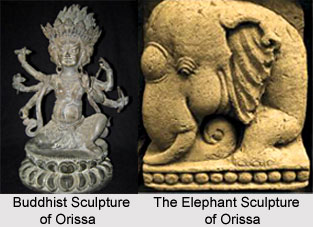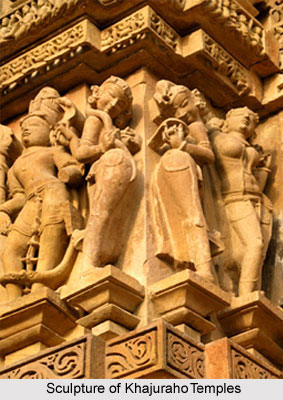 Sculptures of Mahabalipuram temples, Tamil Nadu are renowned instances of southern Indian or Dravidian architecture which continue to impress innumerable historians, a majority of which have been carved from granite. The numerous sculptural marvels of Mahabalipuram temples have earned it the name of an `open air museum` and a World Heritage Site. These spectacular sculptures exhibit elements of Buddhist architecture, and it is said that Mahabalipuram was an inspiration for young sculptors. Mahabalipuram temple sculptures represent the unique variety of sculptures existent in numerable portions of India and also include many half-accomplished masterpieces of sculptures.
Sculptures of Mahabalipuram temples, Tamil Nadu are renowned instances of southern Indian or Dravidian architecture which continue to impress innumerable historians, a majority of which have been carved from granite. The numerous sculptural marvels of Mahabalipuram temples have earned it the name of an `open air museum` and a World Heritage Site. These spectacular sculptures exhibit elements of Buddhist architecture, and it is said that Mahabalipuram was an inspiration for young sculptors. Mahabalipuram temple sculptures represent the unique variety of sculptures existent in numerable portions of India and also include many half-accomplished masterpieces of sculptures.
Sculpture of `Ratha Temples` of Mahabalipuram
Sculptures of `Ratha Temples` comprise the sculptural wonders of the `Pancha Rathas` or Five Chariots named in the honour of the Pandavas, namely Yudhisthira, Arjuna, Bhima, Nakula and Sahadeva. One of the most extraordinary characteristic of the sculptures of Ratha Temples is that they are carved from a single, gigantic piece of stone. Ratha temples belong to the era of a reputed Pallava ruler known as Naharasimhavarman Mamalla. Each of these Rathas has been erected in different styles. The Ratha Temples are single storeyed and some are also triple storeyed.
 Sculpture of `The Descent of the Ganges`
Sculpture of `The Descent of the Ganges`
This particular sculptural piece is a large open-air relief and follows the iconography of Lord Shiva. According to a Hindu legend, King Bhagiratha had requested Lord Shiva to permit Ganga to flow down to the earth, to which the latter agreed and ordered Ganga to tumble down to Mother Earth to nourish the inhabitants of earth. The sculptors have skilfully portrayed this mythological event utilizing natural cleft, and creating images of some mythological deities like `Apsara`, `Kinnara`, `Gandherya`, `Gana`, `Naga` and `Nagini` besides wild and domestic animals, in the Descent of the Ganges.
Sculpture of the `Shore Temple` of Mahabalipuram
Most of the sculptures of the Shore Temple at Mahabalipuram have eroded due to the damages caused by seawater and air, though they exude an exclusive charm in their own unique way. The detailed ornamentation and sculptural mastery of this temple indicate that Pallava styles of architecture have been employed to beautify this religious structure. This grand temple exists alongside Bay of Bengal and can be accessed from a western side, which faces away from the sea. Brand new sculptural structures have been unearthed recently, thanks to some latest excavations conducted here.
Sculpture of `Mandapas` of Mahabalipuram
Also referred to as `Mandalas`, Mandapas are acclaimed rock sanctuaries, which have been constructed in the style of rooms, equipped with bas-reliefs. This sanctuary is the refuge of several Mandapas, one of which is dedicated to `Varaha`, an avatar of Lord Vishnu, Lord Krishna, Pandavas and also `Mahishashurmardini`. This temple is also termed as `Varaha Varaha Cave Temple` which is believed to have been created during the 7th century.
Sculpture of Temple of Rivage of Mahabalipuram
Dedicated to Lord Shiva, the Temple of Rivage consists of awe-inspiring sculptural grandeur which has been erected with the aide of cut stone, during the regime of King Rajasimha Narasimavarman II. There exists a high tower which is similar to a beautiful pyramid, wherein all the sculptures depict various moods of Lord Shiva.
Sculpture of Thirukadalmallai Temple of Mahabalipuram
The Thirukadalmallai Temple was established by a Pallava ruler and is dedicated to Lord Vishnu., with an aim to preserve its priceless sculptural specimens and to prevent its corrosion from the waters of the ocean. Following the construction of this notable temple, its architecture was capable of conservation against the tides of the sea.
Besides young sculptors, highly dexterous sculptors have probably shaped the famous temples sculptures of Mahabalipuram, which is a town situated in Kancheepuram District.



















